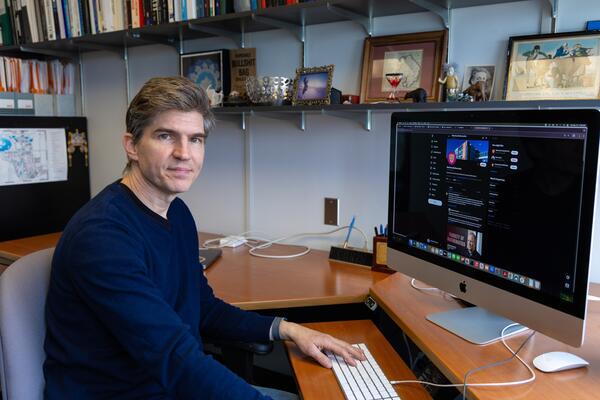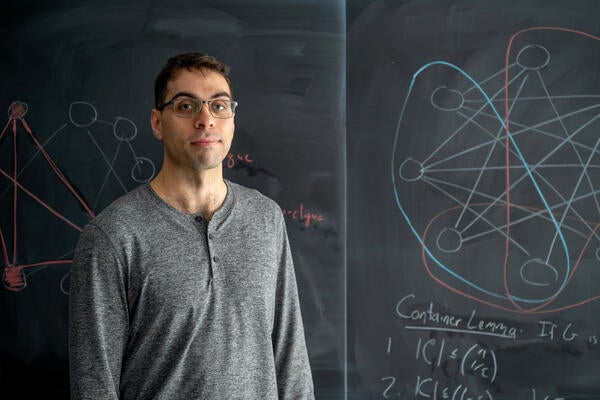
Using AI to clear elective surgery backlog during COVID-19 pandemic
AI models can optimize health-care delivery to help offset the backlog of elective surgeries caused by COVID-19.

AI models can optimize health-care delivery to help offset the backlog of elective surgeries caused by COVID-19.
By Media RelationsIn a new study led by University of Waterloo student Natasha Rozario, machine learning was used to create customized models to optimize the efficiency of operating room (OR) booking times. The model enables a 40 per cent increase in the frequency of ORs running on time.
Rozario was inspired to undertake the study after the COVID-19 pandemic resulted in the declaration of an emergency leading to the cessation of elective surgery in Ontario. It is estimated that between March 15 and June 13, there was a provincial backlog of 148,364 surgeries.
“Given the system-level challenges we face now, and in the months ahead as a result of the COVID-19 pandemic, a focus on the most efficient use of our limited and precious resources will be vital to provide the level of care our community requires,” said Rozario, an undergraduate student in Waterloo’s David R. Cheriton School of Computer Science.
“The cancellation of large numbers of surgical procedures because of the COVID-19 pandemic has drastically extended waitlists and negatively affected patient care and experience. All these procedures will need to be addressed, so we have created a more efficient way to make sure these patients are all getting the care they need in an efficient manner.”
The model also results in a reduction in nursing overtime of 21 per cent. This reduction could save hospitals almost half-a-million dollars over three years.
Currently, surgeons commonly use the average time of their last 10 cases as the booking time for future procedures, which results in about 50 per cent of cases running overtime. Cases that run late incur staff overtime costs, affect physician scheduling, decrease morale and delay the ability to complete urgent or emergent cases. Conversely, operating rooms that finish early do not maximize the use of available time and waste costly resources. In some centres, cases that will finish late are cancelled, resulting in significant patient dissatisfaction.
In conducting the study, researchers used machine learning to analyze 36 months of anonymized operating room historical or booking data from 2017 to 2019, comprising 10, 553 cases. The algorithm determined the time required for each operating procedure and showed the overtime rate based on the old schedule and the new overtime rate if new scheduling times are used.
“Our machine learning algorithm proved to be a lot more effective at minimizing overtime frequency, so the rate at which operating rooms are going over the scheduled time,” said Rozario. “This means that more operations can be conducted, and there is a better estimation of how long cases are going to take and how many patients you can see in a day. There are also cost savings for the hospital.”
The study, Can machine learning optimize the efficiency of the operating room in the era of COVID-19?, authored by Rozario of Waterloo’s Faculty of Mathematics and Dr. Duncan Rozario, was recently published in the Canadian Journal of Surgery.

Read more
Here are the people and events behind some of this year’s most compelling Waterloo stories

Dr. Chris Bauch, a professor of Applied Mathematics at the University of Waterloo, is part of a team that has developed a new approach to help public health officials predict where outbreaks might occur. (Elisabetta Paiano/University of Waterloo)
Read more
New research demonstrates that vaccine skepticism on social media can predict public health crises

Read more
Waterloo researcher Cameron Seth is breaking down the world’s hardest computer science problem piece by piece
The University of Waterloo acknowledges that much of our work takes place on the traditional territory of the Neutral, Anishinaabeg, and Haudenosaunee peoples. Our main campus is situated on the Haldimand Tract, the land granted to the Six Nations that includes six miles on each side of the Grand River. Our active work toward reconciliation takes place across our campuses through research, learning, teaching, and community building, and is co-ordinated within the Office of Indigenous Relations.